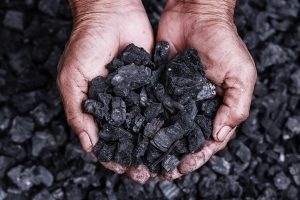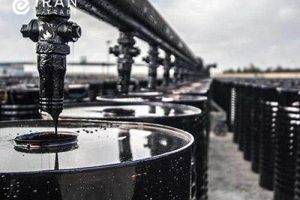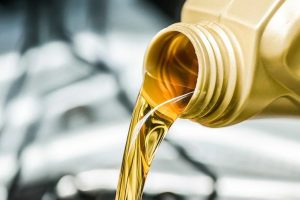Cutback Bitumen: What is Cutback Bitumen + advantages!
Bitumen has many uses in our daily lives. From asphalt paving to roofing insulation, it is undeniable that bitumen is very important for industrial uses. Therefore, its quality also matters. However, did you know that different types of bitumen have different functions and one of them is cutback bitumen? But what is cutback asphalt and how is it produced?
Cutback bitumen definition
Bitumen products have different levels of viscosity. For some, the level of viscosity is low, for others, high. Roadmakers often heat bitumen products before applying them on the road. But sometimes, they need a bitumen product that doesn’t require much heating for application. Consequently, they use cutback bitumen because it has low viscosity.
In fact, one of the major benefits of using cut-back bitumen is that it doesn’t need to be exposed to much heat before application. That is why it’s suitable to apply in colder regions. (Read further content about What is Bitumen)

What is the difference between cutback and emulsion?
Both kinds of bitumen are liquid. But their main difference is their composition. Bitumen emulsion is made of emulsifiers and water. Therefore, it is eco-friendly. However, there are multiple solvents in the composition of cutback bitumen that when they evaporate, can release toxins which are harmful to the environment.
Another major difference between cutback and bitumen emulsion is that because of its composition, cutback bitumen is more expensive since it uses solvents. On the other hand, bitumen emulsion has water in its composition; therefore, it is cheaper than cutback asphalt. (Read further content about Gilsonite Bitumen)

Cutback bitumen and bitumen emulsion difference in usage
Most cutback products are good for applying on both dry and wet surfaces. However, it is best to use cutback products for dry surfaces. Furthermore, cutback takes longer than emulsion to dry on asphalt. For bitumen emulsion, it usually takes 2 to 15 hours to dry after application. But for cutback bitumen, the duration is mostly 24 to 48 hours.
(Read further content about Oxidized Bitumen)

Production of cutback bitumen
Now that we have an explanation about cutback bitumen and know its differences with emulsion, lets see how it is produced. To produce cutback bitumen, manufacturers mix bitumen with other solvents like petroleum, naphtha and diesel. These solvents dilute the bitumen and allow it to be applied at lower temperatures. Therefore, the process of producing cutback asphalt is performed in two phases:
(Read further content about emulsion Bitumen)

1. Preparing the ingredients
First, the manufacturers prepare the required ingredients in their respective ratios. As mentioned previously, solvents are one of the main components of bitumen and depending on the product, their ratio can be between 10 to 50 per cent. There are three types of solvents used in cut back bitumen production.
The first is the rapid curing solvent which is usually petrol or gasoline. The second is the medium curing solvent which uses kerosene and the third is the slow curing solvent which is mostly diesel oil. The manufacturers use these solvents to reduce the viscosity of bitumen.
(Read further content about Viscosity Grade Bitumen.)
Based on the region’s temperature, the kind of solvent for cutback bitumen is different. Sometimes, manufacturers even use two or more solvents to produce cutback asphalt.

Choosing the type of bitumen
For producing cutback bitumen, manufacturers have to choose bitumen with a certain degree of penetration. Usually, they choose bitumen with 70/100,160/220 and 250/330 penetration degrees. If the viscosity of bitumen is high, then the manufacturers have to heat it for some time before mixing it with the solvent.
(Click to find out the latest bitumen price.)

2. Mixing bitumen and solvent
After preparing the ingredients, the manufacturers transfer them with pumps to the mixing device. In some manufacturing plants, this device is a colloid mill that can dissolve the bitumen into smaller drops rapidly. It can also mix them with solvents.
(Read further content about MC Bitumen.)
After the cutback bitumen mixture is ready, the manufacturers put it into a compressor to cool it. Finally, they transfer the cutback asphalt as a product or store it in a storage tank.

Different cutback bitumen types
We already explained that different solvents are used in producing cutback asphalt, which makes their products distinct from each other. Consequently. based on the evaporation rate of solvents, cut-back bitumen products are divided into three categories of rapid curing, medium curing and slow curing products, which we will expand more on below.
According to the viscosity standard of cutback bitumen, every product in every category has its grading.

What are the three types of cutback explain: Rapid curing
As you can see from the name, rapid-curing cutback bitumen will soon dry on the surface after application. The main reason for this is that its evaporation rate is 0.3 times faster than the acetone evaporation rate. Furthermore, rapid curing cutback products are called RC in abbreviation and have different grades.
RC70, RC 30 and RC 250 cutback bitumen grades belong to the category of rapid-curing cutback asphalt and are mostly used in road maintenance.

Medium curing cutback bitumen
Manufacturers use solvents with average evaporative rate for producing this kind of bitumen. Usually, the evaporation rate of medium-curing solvents is between 0.3 to 0.8 times the evaporation rate of acetone.
Therefore, many manufacturers use kerosene as a medium-curing solvent in producing medium-curing cut back bitumen. However, since medium-curing cutback bitumen won’t mix well with aggregates, many road workers have to use this type of bitumen as a binder in cold asphalt.
MC70, MC30 and MC250 are some of the more popular products of medium-curing cut-back bitumen.

Slow-curing cutback bitumen
The evaporation rate for slow-curing cutback bitumen is slower than other bitumen products. That is why manufacturers use solvents with evaporation rates 0.8 times slower than acetone. They often use solvents like kerosene or fuel oil. Road workers also use slow-curing cutback asphalt for dust depression and in cold mixed asphalt.
SC70 and SC250 are the more common products of slow-curing bitumen.
(Read further content about PG Bitumen)
Benefits of using cutback bitumen
Because of its components, using cutback bitumen has its advantages. The prime example would be its ease of application. Since cutback bitumen evaporates quickly, road workers don’t need to heat it for application, even though many bitumen products require heating before use. They can also apply it at lower temperatures in cold areas. Furthermore, cutback asphalt is resistant to weather and is durable.

Cutback bitumen uses
Nowadays, cutback bitumen products are mostly used in road construction and maintenance and road workers use various methods that apply cut back bitumen which are:

Cold asphalt method
Road workers build cold asphalt in ambient temperatures and use a mixture of aggregates and liquid bitumen. Therefore, they can also use bitumen emulsion and cutback bitumen to build cold asphalt.
(Read further content about Export Bitumen)

Prime coat method
The prime coat method is a layer that road workers apply on the base layer of the road. For this method, the road workers can use three types of rapid curing, medium curing and slow curing cutback bitumen products.

Prime sealing
If the temperature is too low to apply bitumen on the road or there is too much traffic that decreases the cohesion of asphalt, the road workers use cutback bitumen to spray or spread on the asphalt. Consequently, cutback asphalt can protect the asphalt for up to 6 to 12 months.
(Read further content about Emulsion Bitumen)

Tack coat method
When road engineers want to bind two layers of asphalt, they use the tack coat method. In this method, the base layer of the mixture is bitumen penetration grade or viscosity bitumen with aggregates and the top layer is the surface layer of asphalt. Road engineers can use bitumen emulsion or slow-curing cutback bitumen for applying tack coats.
(Read further content about Viscosity Bitumen)

Spray sealing method
Sometimes, the road is damaged but its traffic is light or medium. In these instances, applying a new asphalt layer is unnecessary and expensive. Therefore, a cheaper way is to use the spray sealing method to fill the cracks in the road.
In this method, the road workers spray a thin layer of cutback asphalt on the road which makes it waterproof. After that, the road workers pour stone aggregates on the cutback bitumen layer.

Pipeline coating
As you can see, most cases of cutback asphalt use are for road construction and maintenance. But sometimes, cut-back bitumen can also be useful in building pipelines.
For instance, pipe builders can use cutback asphalt to build a protective layer for gas and oil pipes to protect them against corrosion and dust. To do this, the pipe builders first apply bitumen. Then, they apply fibreglass tape on the pipes.
Pipe builders mainly use slow-curing cutback products such as mc-30 and MC70.

Cutback bitumen price
Some factors affect the price of cutback bitumen. The most important of them is supply and demand for cutback asphalt. For example, picture a country in a cold region which needs significant amounts of cutback asphalt. But if the amount of supply doesn’t match its demand, its price will increase.
(Be aware of latest Bitumen Price)

Production costs and ingredients
One of the main components of cutback asphalt is the price of petroleum. The price of petroleum is constantly changing. Therefore, when its price increases, the cost of cutback asphalt is also increased.
Additionally, production costs also affect the price of cutback bitumen. Each company has different production costs for bitumen and so, they charge specific amounts for their bitumen products.

Local tariffs
Tariffs are set by local governments and their policies for cutback asphalt products influence their pricing. Each government has their unique policies for purchasing cutback bitumen which affects its pricing.

Where to buy cutback bitumen
Road building industry has made many advancements in terms of technology and the products it uses. Therefore, there are many types of bitumen that have different functions for each environment, of which bitumen is one. If you are interested in purchasing high-quality bitumen, we can easily provide you with the best bitumen products here at Iran ETrade.

- What is Petroleum Coke: Types + Applications
- What Is Mazut: Advantages, Applications + Hazards
- What Is Diesel fuel: Types Gas oil + Applications
- What is gasoline? Types + Uses and Production Process
- Export Bitumen Specifications: Requirements & Standards
- 17 Difference Between Bitumen Emulsion and MC Bitumen









